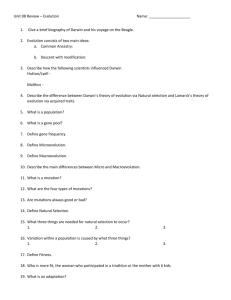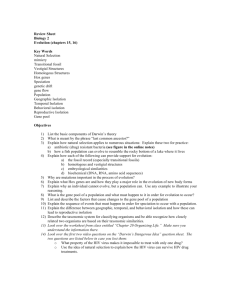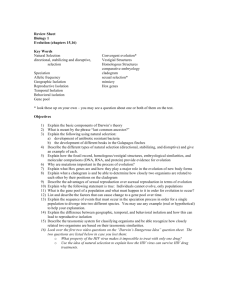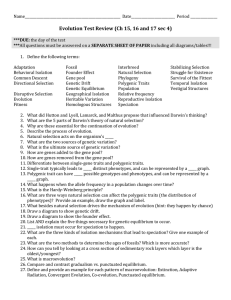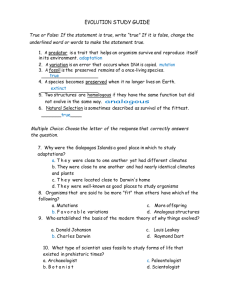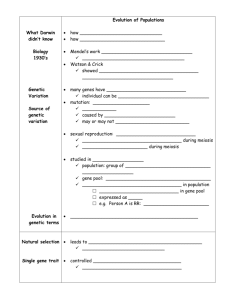U10: Genetics and Meiosis: Vocabulary and
advertisement
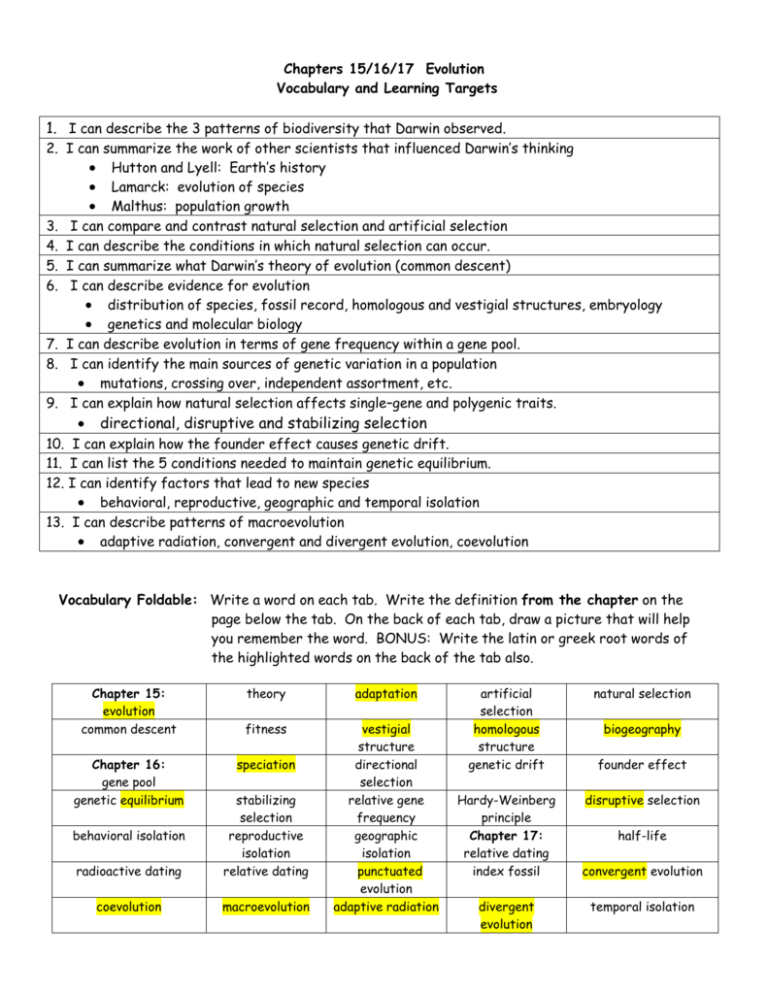
Chapters 15/16/17 Evolution Vocabulary and Learning Targets 1. I can describe the 3 patterns of biodiversity that Darwin observed. 2. I can summarize the work of other scientists that influenced Darwin’s thinking Hutton and Lyell: Earth’s history Lamarck: evolution of species Malthus: population growth 3. I can compare and contrast natural selection and artificial selection 4. I can describe the conditions in which natural selection can occur. 5. I can summarize what Darwin’s theory of evolution (common descent) 6. I can describe evidence for evolution distribution of species, fossil record, homologous and vestigial structures, embryology genetics and molecular biology 7. I can describe evolution in terms of gene frequency within a gene pool. 8. I can identify the main sources of genetic variation in a population mutations, crossing over, independent assortment, etc. 9. I can explain how natural selection affects single–gene and polygenic traits. directional, disruptive and stabilizing selection 10. I can explain how the founder effect causes genetic drift. 11. I can list the 5 conditions needed to maintain genetic equilibrium. 12. I can identify factors that lead to new species behavioral, reproductive, geographic and temporal isolation 13. I can describe patterns of macroevolution adaptive radiation, convergent and divergent evolution, coevolution Vocabulary Foldable: Write a word on each tab. Write the definition from the chapter on the page below the tab. On the back of each tab, draw a picture that will help you remember the word. BONUS: Write the latin or greek root words of the highlighted words on the back of the tab also. Chapter 15: evolution common descent Chapter 16: gene pool genetic equilibrium theory adaptation fitness vestigial structure directional selection relative gene frequency geographic isolation punctuated evolution adaptive radiation speciation radioactive dating stabilizing selection reproductive isolation relative dating coevolution macroevolution behavioral isolation artificial selection homologous structure genetic drift natural selection Hardy-Weinberg principle Chapter 17: relative dating index fossil disruptive selection divergent evolution biogeography founder effect half-life convergent evolution temporal isolation
